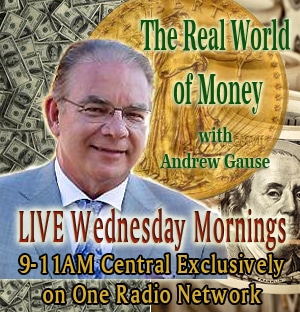NEW YORK (Reuters) – The nightmare scenario for U.S. economic authorities is here: confidence in their ability to rescue the country from a housing-led financial panic is now at its lowest level since the crisis began.
This means losses for investors, already totaling nearly half a trillion dollars, could mount even further over the next few months, with implications for business investment and the overall health of the economy.
"You see a massive potential for financial meltdown on a global scale,"
said T.J. Marta, fixed-income strategist at RBC Capital Markets.
Federal Reserve Chairman Ben Bernanke and Treasury Secretary Henry
Paulson, testified before Congress this week on the countrys
precarious financial state. They were met with unusually fierce
questions from lawmakers on the feasibility of a plan to provide extra
funding for mortgage finance giants Fannie Mae (FNM.N: Quote, Profile,
Research, Stock Buzz) and Freddie Mac (FRE.N: Quote, Profile, Research,
Stock Buzz).
"I will use every power in my arsenal to stop this," said Jim Bunning,
Republican Senator from Kentucky, berating the Treasury initiative in
no uncertain terms.
The governments vow to back the institutions largely failed to restore
faith in a near-term recovery for battered financial markets. After a
momentary jolt higher on Monday, U.S. stocks ended lower. The Dow Jones
industrial average on Tuesday slipped below 11,000 for the first time
in two years.
U.S. shares did recover on Wednesday, but this was largely due to a
rapid retreat in oil prices than any renewed confidence in credit
markets or growth prospects.
"Peoples horizons are moving out to 2009 and they are still not seeing
any end in sight and with credit losses increasing thats really not
good news," said Steve Goldman, market strategist at Weeden & Co.,
in Greenwich, Conn.
"The backstop with Freddie Mac and Fannie Mae doesn’t deal with heart of the problem: foreclosures, supply."
BAILOUT FATIGUE
Fannie Mae and Freddie Mac together own or guarantee about $5 trillion in mortgages, about half of the entire U.S. mortgage market. The bond markets reaction to the Treasurys vow to support the government-sponsored entities was telling. U.S. Treasury bond prices rallied sharply on Tuesday despite a 9.2 percent year-on-year jump in producer level inflation, the biggest in almost 30 years.
This counterintuitive reaction for government debt, whose fixed returns make them highly-sensitive to inflation, indicates just how frantic investors have become. They would rather hold paper whose value might be eroded over time than face the prospect of immediate losses in riskier assets like equity shares or asset-backed bonds.
"No one knows where it is going to end for stocks," said Robert Macintosh, chief economist at Eaton Vance Corp., in Boston. "Talk about a negative tone, no matter what anybody says or does it seems to get worse."
Especially hard hit, U.S. bank shares fell this week to their lowest level since 1996 on fears of seemingly endless losses.
The renewed risk aversion was also salient in very short-term government bills. The TED spread, the gap between 3-month bills and interbank rates of similar maturity, has widened to its worst levels since April.
And this has happened even as Libor rates steady, highlighting the acute nature of the safety bid. Bills rates barely budged on Wednesday despite a pullback in longer-dated Treasuriesprices.
At the forefront of investor worries is the collapse of California-based mortgage lender IndyMac. Regulators seized the company on Friday after a bank run in which customers panicked over the firms survival withdrew $1.3 billion over 11 business days. This was one of the largest bank failures in U.S. history.
THE LENGTHENING SHORT LIST
The scariest thing about it is that things seem to be getting worse rather than better. Gerard Cassidy, another RBC analyst, estimates that more than 300 U.S. banks could close their doors in the next three years, double what he had estimated back in February. Only a handful have failed so far.
With a number of banks set to report earnings this week, Wells Fargo & Co (WFC.N: Quote, Profile, Research, Stock Buzz) did surprise the market on Wednesday with losses that were less severe than some had feared. Nonetheless, confidence in the overall financial system remains in shaky.
Saturated with bad news, investors appear to have thrown in the towel. As they do this, the risks that both consumers and businesses will face further retrenchment at the same time is growing.
Bernanke appeared conscious of this possibility, using his testimony to back away from earlier assertions that the risks to economic growth had diminished.
"The possibility of higher energy prices, tighter credit conditions, and a still-deeper contraction in housing markets all represent significant downside risks to the outlook for growth," he said, even while stressing concerns about inflation.
Back in April, the International Monetary Fund got some criticism for offering an estimate of total crisis-related losses, including insurance and home equity, that reached the $1 trillion mark. At the time, many analysts believed that number was too high. With the crisis deepening, the estimate may have prove conservative.
It recently emerged that the Federal Deposit Insurance Corporation, or FDIC, has a secret list of about 90 banks that could run into trouble. Developments surrounding Fannie and Freddie suggest that list could get longer.

'As faith in bank bailouts dims, losses set to deepen' has no comments
Be the first to comment this post!